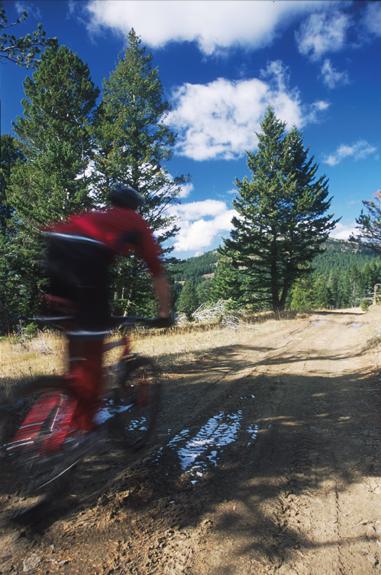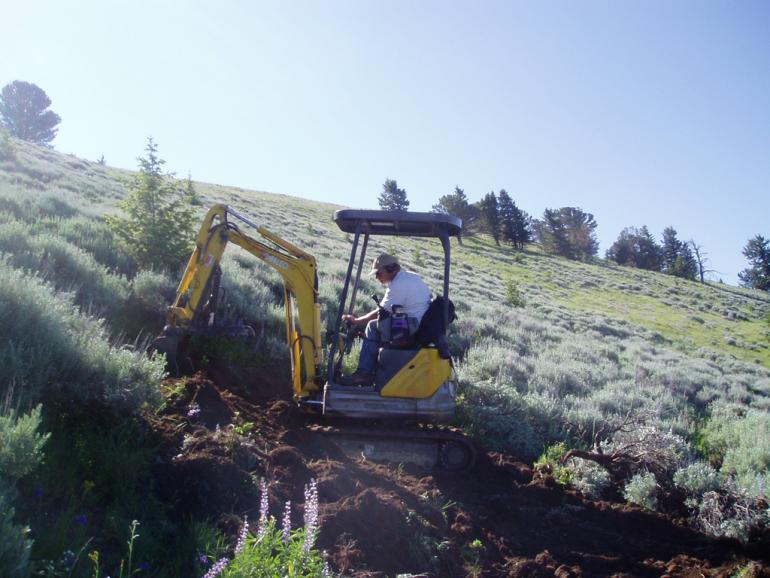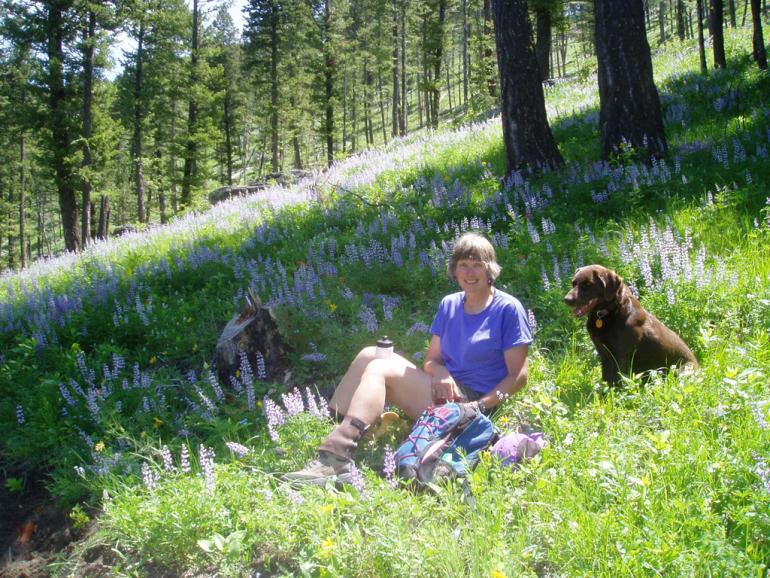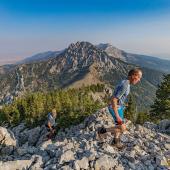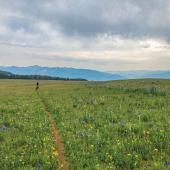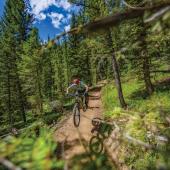Tale of a Trailblazer
Ask about twelve-hour workdays stacked up, sometimes in blistering hot or numbingly frigid weather, continuous fatigue, or aches in the body, and Terry Johnson will still insist he has the best job in the world. If you’ve ridden or hiked the new Bangtail Divide Trail that travels 23 miles from the Brackett Creek parking lot south to Stone Creek in the Bridgers, you’ve sampled 65-year-old Johnson’s latest masterpiece.
Johnson’s trail-building history began in 1958, when he hitchhiked out West from Wisconsin. Once in Montana, he found the job he’d been dreaming about—riding horses and maintaining trails in the Beartooth Wilderness. He came back to the same job for the next three summers before jumping into a 21-year career with the Forest Service as a Forester—a job that took him to various parts of Montana and Idaho, sometimes working on trails, sometimes other tasks like wild-and-scenic-river studies. Ten years of outfitting for elk hunters followed; then in 1986, a pause. The kind of uncomfortable pause most everyone experiences when trying to figure out what to do next.
“I read a book called What Color is Your Parachute,” Johnson recalls. “It made me really think about what made me happy and what my best times in life were… They were the times when I was building trails in the mountains.”
Since then, Johnson has been his own boss, working as an independent contractor building trails for the Forest Service. Over time he has amassed the necessary equipment to do the job right: mini excavators, gravel-hauling equipment, gas-operated jackhammers, rock drills, and mountains of shovels, axes, picks and chainsaws. Add to that a schooled and practical knowledge of engineering and landscape architecture. “The whole design needs to be geared towards preventing erosion and creating a long-lasting trail with minimal upkeep,” Johnson says. He has used these guidelines to lay out and cut the original trails at Bohart Ranch and in rebuilding many of the trails up in Hyalite and the Bridgers, to name a few.
“We put in long days because our season is short,” Johnson says. “When the weather is good, you go for it. We often leave town at 6 am and get home around 6 or 7 at night. When you’ve got a good crew, you work until the work is done, especially when focusing on a certain segment.”
Sometimes the job requires camping and living on-site for awhile, like a memorable project Johnson sent a crew on in the Bob Marshall Wilderness two summers ago. Trail workers hiked 26 miles in to the job site and labored for six weeks before coming back out. They didn’t see anyone else besides fellow workers for four weeks.
Camping and working in wild places all day are highlights of the job. “But the hand-work using picks and shovels is back-breaking,” Johnson admits, when asked about the demands of his job in relation to his age. “I still do most of the sawing, but I’m slowing down. I’m keeping a more experienced crew lately and operating the equipment myself a little more.”
One of Johnson’s experienced crewmembers is his 64-year-old wife, Frieda, who clears trees and other debris from the trail, snips branches and exposed roots, and is known to be handy with a pick.
Frieda laughs when asked if she collects a paycheck, as if the idea were preposterous. Those who are on the payroll make $25-35/hour during the intense May through October job season. All of Johnson’s employees have prior experience; he advises those wanting to get hired on a trail crew start out by volunteering with the one of the groups like the Montana Conservation Corps, or with the Sierra Club.
It’s not a job that is traditionally populated by women, though Johnson says he’s always been open to women working for him. Those who’ve embraced the physical challenge obtain something near legendary status, like Deirdre Eitel, one of Johnson’s former employees.
“When we would camp Dee Dee used to get up and run 5-10 miles at dawn, take a swim in the river, cook breakfast for the crew, and then work all day,” Johnson recalls. “You don’t find many male or female workers like that.”
The end of the trail is always cause for celebration. The Bangtail Divide Trail took three years to complete, with an average of five crewmembers working it for a few months each summer. The new trail replaces several older trails in the area after a land swap changed existing right-of-way boundaries.
Johnson and his crew have crafted a 10% grade path, designed with mountain bikers in mind. Johnson rode the entire trail with Forest Service officials during the final inspection; Frieda has mountain biked the entire stretch many times since completion.
“There are 40 switchbacks on either end,” says Frieda. “But it’s probably easier to start riding from Brackett Creek because it’s at a little higher elevation.” Over the course of the switchbacks there are several rock retainer walls that Johnson’s crew scavenged from the ground into works of fitted art. There was also a 10-foot cliff that had to be blasted in order to link the trail, which may bring to mind questions of impact for some.
“I firmly believe trails have minimal impact on wildlife because it concentrates human usage onto trails,” says Johnson. “The animals adjust without necessarily moving out. There is a visual impact of course, so I try to minimize that.”
If Johnson’s recollections are any indication, expect to see lots of deer, elk, moose, grouse, and even an occasional bear while traveling along the trail—along with carpets of meadow flowers. It’s images like these that keep him coming back for more each season, knowing exactly what color his parachute is.


